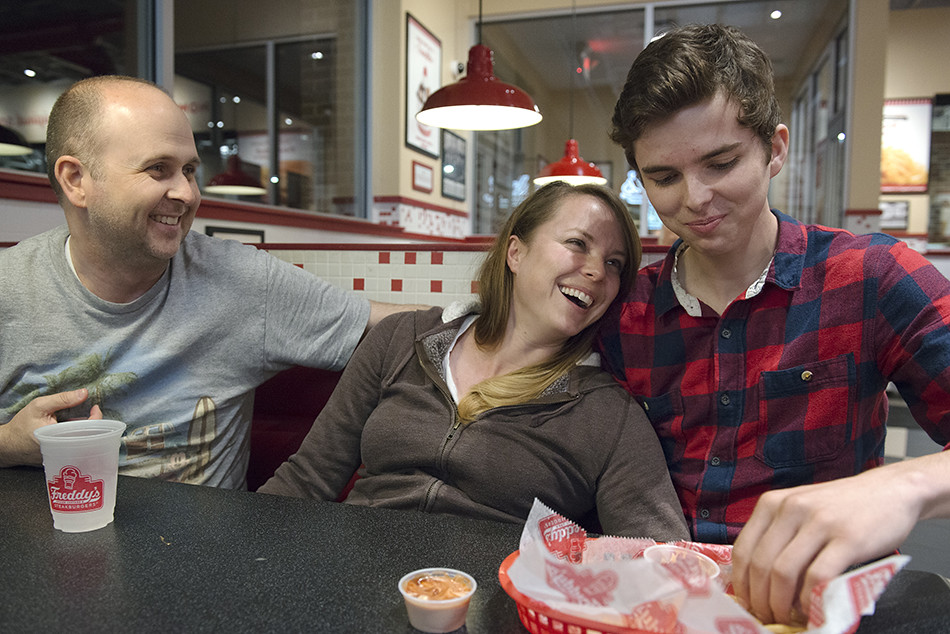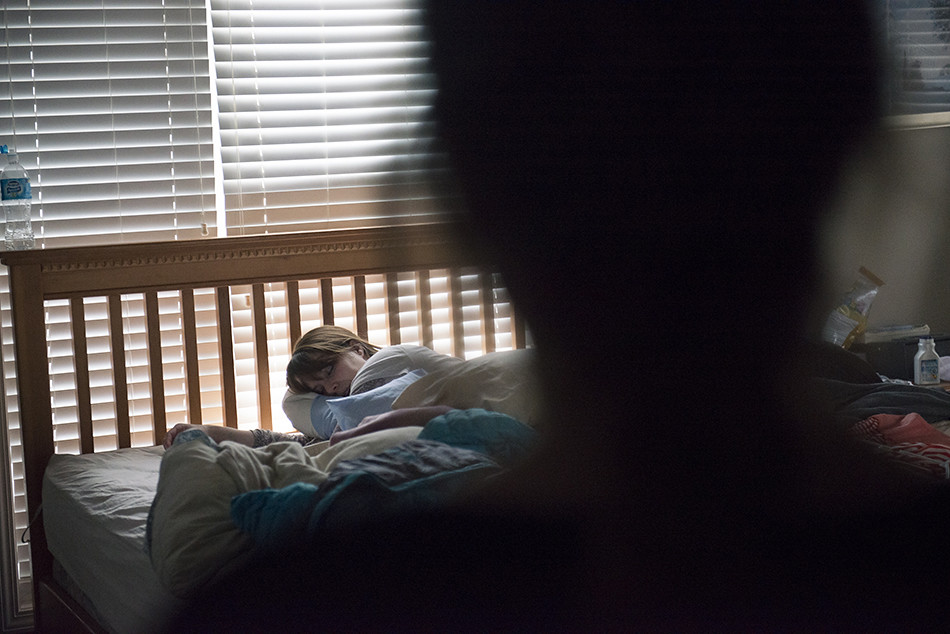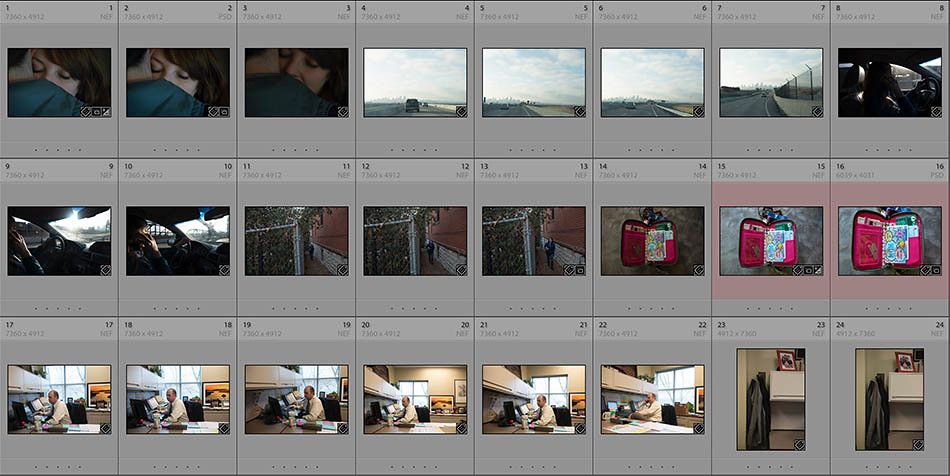Spotlight on Matthew Busch
Jun 6, 2016

TID:
This is a striking image. Please tell us a little of the backstory of the it.
MATTHEW:
Thanks for inviting me to share my work on this platform. It’s a great resource for talking about visual language and why we as documentarians, journalists, artists, storytellers...however we choose to identify ourselves, share the content that we do. It’s important for me to understand my own motivations, however well I can.
This image is part of the story “Angela’s Beautiful Life,” and it’s my way of sharing the story of an incredibly brave woman and her family who are living with mental illness. I met them at the 2014 Missouri Photo Workshop, where we’re tasked with finding stories that reflect the community we're in. I met Angela walking her dog on the street one day. We talked at her home and she opened up to me about her life living with borderline personality disorder. After that talk I proposed doing a story on her life. Borderline personality disorder is a pretty severe mental illness characterized by intense anxiety, depression, empathy, and compassion.
If someone has it can be hard for them to have a sense of normalcy. It’s like someone has supercharged all of your emotions and you don’t know how to deal with it. It’s constantly being pushed to the edge of what you know about yourself and the world you live in. A way that some who have this type of illness deal with the emotional overload is by harming themselves in some way --- through eating disorders, cutting, engaging in risky activities, anything that can replace or somehow mitigate the emotional intensity. Angela has gone through a variety of these coping mechanisms, along with therapy and limited medications in dealing with her illness.

I met her at a time in her life when she had just gotten out of a rehab treatment center where she’d spent two months after having a breakdown the previous year. Her illness hadn’t gone away, and won’t, but she was learning better skills through treatment and therapy that were allowing her to manage it better. I have no idea why she decided to talk to me about all of this when I first met her. It takes an incredibly brave person to do that, to just open her door, her family’s door, to a stranger with a camera.
She’s told me since that she wants her experience to mean something, and sharing it with others, some who are possibly in a similar situation, can help do that. She’s married with four kids, who were all under 17 at the time. She lives a normal life for the most part, and then there’s her illness. It was the contrast between the two that drew me to her story. How do you handle both? Yes, she has an illness, but it makes other parts of her life much more deeply felt. I wanted to show that you can have this illness and still live a rich and meaningful life, because she’s doing it.
TID:
How did you prepare for this shoot, or what did you to put yourself in place to make this happen?
MATTHEW:
When I met Angela at the workshop, we had a small exhibit that the town was welcome to come and view. But I wanted to tell her story in a deeper way, which would take more time, and I wanted to share it with a wider audience. To me, if the point is to share the story with others, I want to try and get it in front of as many people as possible. I asked Angela and her family if they were up for me coming back and documenting their life in a more intimate and extensive way. We made plans and I traveled back to their house, staying with them multiple times over the next year. It was during one of those trips that I made this picture.

TID:
What challenges did you encounter while working to make this image?
MATTHEW:
As a photographer I have the constant issue of wanting to take pictures that I’m afraid to. I see something meaningful, and I’m afraid of offending someone by just asking to take a photo. One way I deal with it is by asking. I tell people that if I’m getting too close to just tell me to stop. I want to engage the people I’m photographing, in order to get to know them better, and to make more revealing images. There has to be intimacy in my images. If you can’t feel it, then it doesn’t work.
TID:
Can you elaborate a little more?

MATTHEW:
In this specific case, there was a question that I had been wanting to ask Angela. When asking about anything to do with her illness though, I am constantly aware that it’s bringing up a subject that’s A) difficult to talk about and B) painful to remember. Whenever you’re trying to move through something that’s been a destructive force in your life, answering questions about it over and over again and having every movement you make followed closely with a camera has got to play havoc on your mind.
I can just imagine her saying to herself, ‘Why did he take that photo? What does this situation say about my life and my illness?’ So it’s a constant balance of wanting to ask the questions that I need to without adding too much stress on her in the process. In that context, I felt that this moment was one where I could ask what I wanted to.
TID:
What surprised you about the moment that you weren't expecting?
MATTHEW:
I tend to try and plan things before I finally jump in and start working, but once I actually get into a story, I try and let it take me, just feeling my way through and reacting to what I find. With Angela I am constantly surprised by her, myself and how I feel. I think this moment was just one of many such moments with Angela and her family. I asked them to open up and they did, this surprises me constantly. It’s because of her and people like her that I continue telling stories.

TID:
What have you learned about yourself in the process of making images like this?
MATTHEW:
It’s taught me that I want to keep making these types of images. I need to be close to people to photograph: close for a moment, or close over a long period of time, I need that intimacy to keep working. Without it you’re left showing the surface of situations and ultimately the otherness of what’s in front of you.
Being disconnected is a recipe for playing into stereotypes and channeling other work that’s been done before. Creating intimacy allows the work to come more naturally.
TID:
Now, onto the moment. Can you talk about the moments leading up to the picture and also the actual moment.

MATTHEW:
After she’d had a therapy session one day, Angela and I sat down to have lunch at a place in town. She’d harmed herself recently and I knew that I needed to make images that spoke to that constant presence in her life. So I asked her, “Where do you keep the razors in your house?” I thought that she might keep them somewhere hidden where I could show them in the context of her home.
But Angela, being the candid person that she is, opened her purse and showed me the razor she kept behind her IDs and credit cards. I think at that moment it kind of hit me how you can literally carry this type of illness with you, and how much harder it must be to find ways of dealing with it when it's always there. You can't see this illness, it’s in the mind. And not being able to point to it in a physical way is a pain in itself. I wanted to capture the psychological aspect of that dilemma. You’re seeing the normal life contrasted to the illness in the photograph, she always knows it's there. We talked a moment and I took a picture of her wallet there on the lunch table.
TID:
In conclusion, what advice do you have for photographers?
MATTHEW:
I’m still trying to figure out how I can live and keep working myself. For me it’s a lot of wondering if you’re in the right place, working on the right projects, and doing it all in the dark. But it’s more than worth it, it’s the only way I can imagine living at this point. Understanding my own boundaries and motivations, and where they come from, helps me to not transfer those boundaries onto the people I’m photographing. If you assume other people have the same boundaries as you, and the same insecurities, then you won't be able to find out what actually goes on in their lives and show it in a meaningful way.
:::BIO:::

I was raised in a small town in Texas, USA. After studying journalism at the University of Missouri and completing a bachelor’s diploma at the Danish School of Media and Journalism, I worked a string of internships for various newspapers around the U.S. The experience left me wanting to pursue personal projects with less linear narratives, while freelancing for news organizations and others to sustain myself. In 2014 I moved back to Texas where I freelance and pursue projects around the world with contemporary, social and personal themes. The majority of my clients have included Getty Images, CNN, The New York Times, The Wall Street Journal, Associated Press, The Washington Post and others.
Website: www.matthewbuschphoto.com
Instagram: www.instagram.com/matthewbusch
Link to article “Angela’s Beautiful Life,” on CNN: http://www.cnn.com/2016/02/25/health/cnnphotos-angelas-beautiful-life/